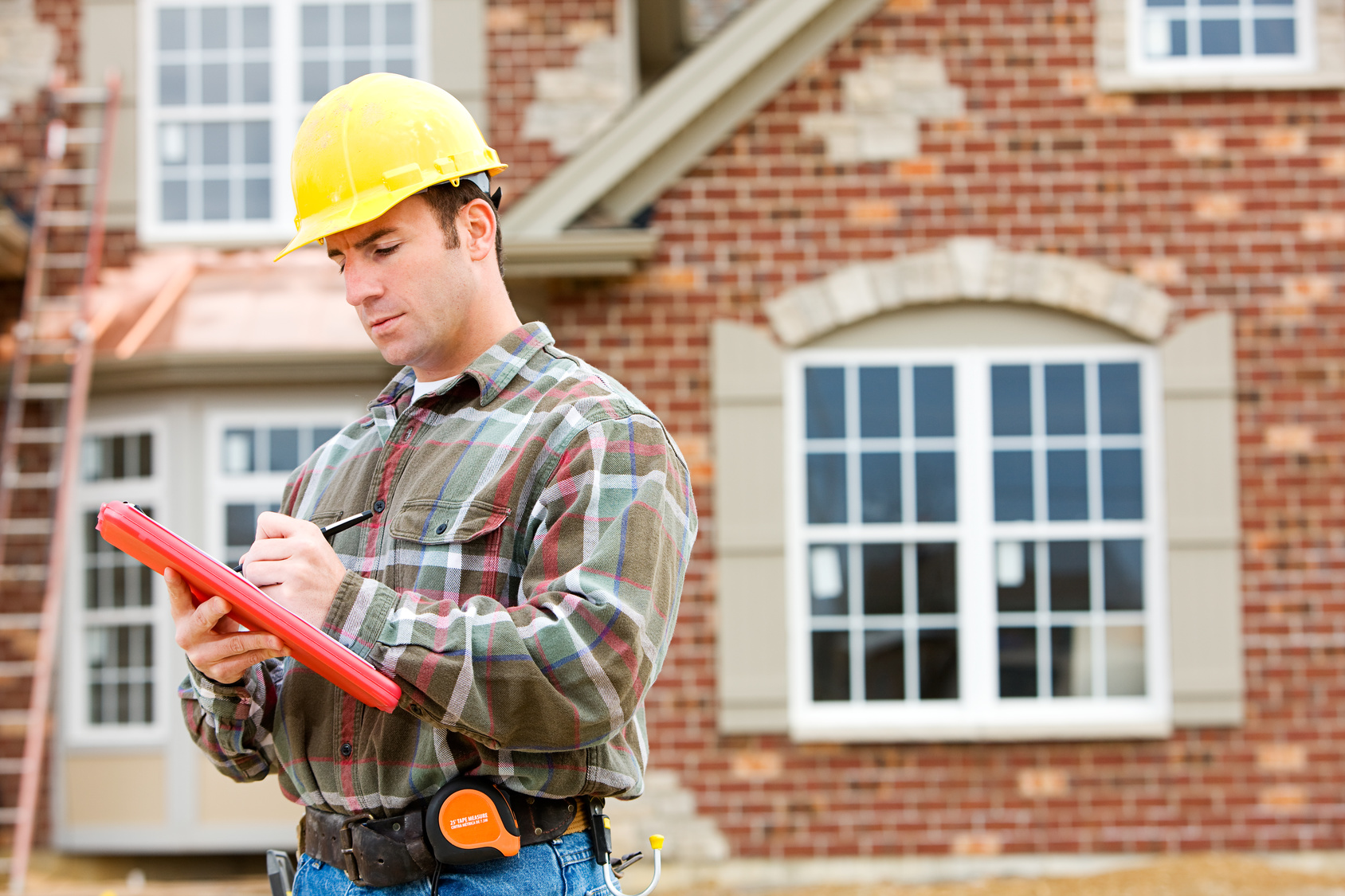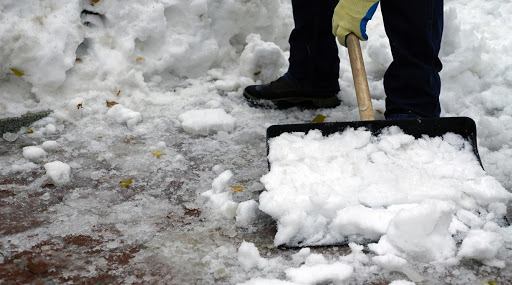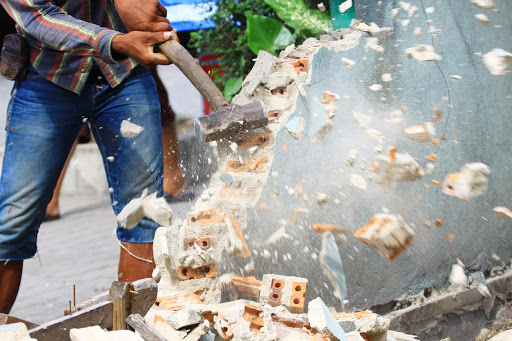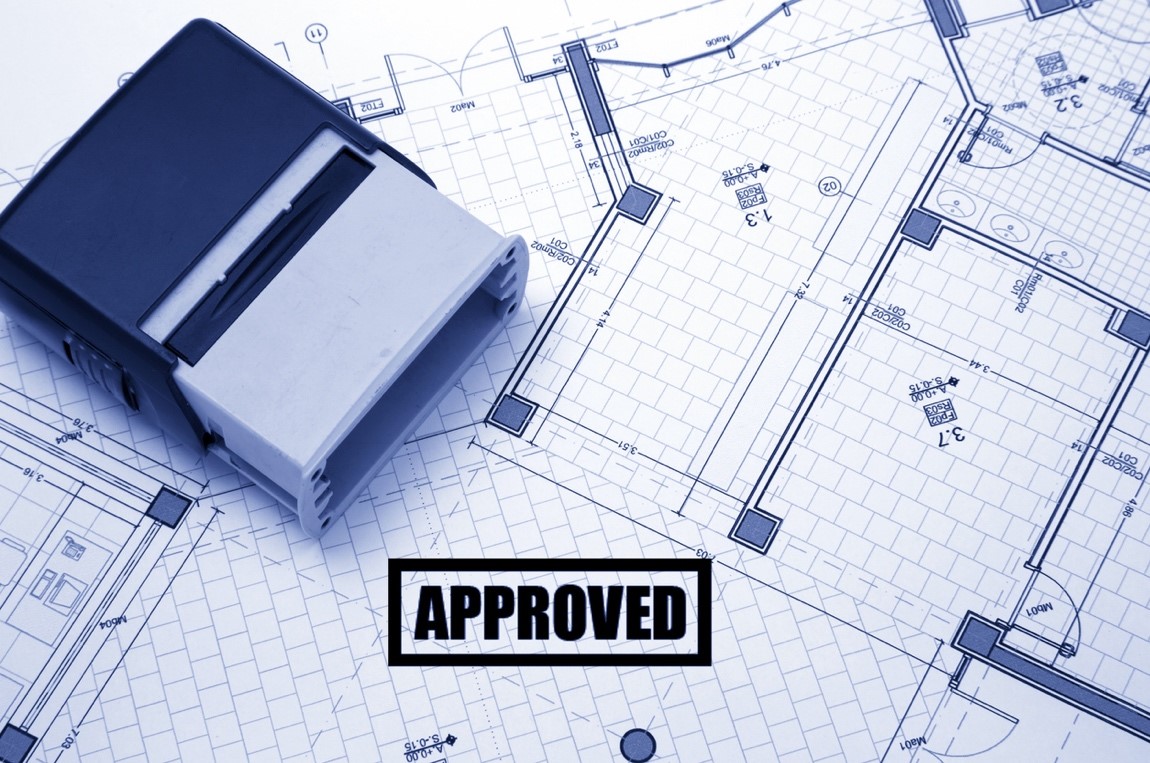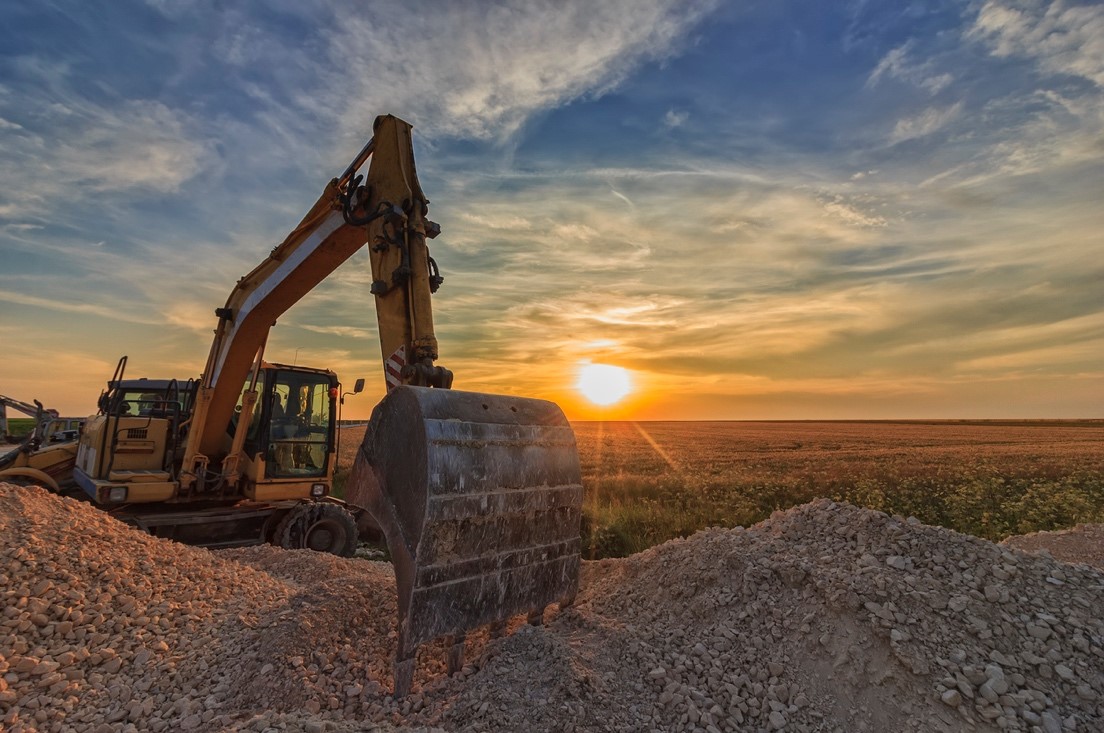Home Buying: Tear it Down vs. Repair
It is sensible to buy a home in this real estate market that you might consider a fixer-upper. If you can procure a home in an established neighborhood with good schools and proximity to entertainment and jobs, then go for it!
But when you start to break down the costs for repair, you might be in over your head. Why would a house need to be torn down? Consider what goes into a complete home renovation project. Would an update to the existing house cost even more than tearing down and starting over?
If you can’t decide the determining factor on why would a house need to be torn down, walk through the pros and cons with us. Do not forget to consider preparing the land for a new home build amidst established homes in the area. Here are some other steps to examine in the process.
How to Determine Your Solution
As you are looking for a home, consider why would a house need to be torn down? Does the home you found in the perfect location have everything you need? Sometimes, it doesn’t. Some reasons why people tear down and start from scratch include:
- The Need for More Square Footage: Older homes have smaller square footage than you need. If you would like more room inside the home, then make it happen. Demolition costs to demolish and rebuild could cost less than adding onto an existing home, depending on the extent of the project.
- A Place to Live During Construction: In many cases, there is a vacant lot next to the house that is perfect for building a new home. You can live in the existing home during construction and then demolish it after you move into the new build.
- Foundation Issues: It may not be a sound structure if the existing home has major foundation issues. If the bones of the home aren’t solid, then it’s best to start from scratch. The condition of the house is a major factor as to why would a house need to be torn down.
- The Desire for a 2-Story Home: Building on a whole 2nd story to a home can cost as much as the house itself. You may want to start from the ground up and create an updated, energy-efficient home with all new appliances, windows, doors, vents, pipes, foundation, and roof.
- Energy Efficiency: A new home is built with updated technology to keep your power costs down. An old house is leaky and creaky. You are sure to lose air through the cracks of an older home.
- Wired for Modern Electronics: Build a new home that has charging stations built-in with smart home capabilities. You can get those things rewired into older homes, but add them to your estimated renovation costs.
- Modern Layout: Small bedrooms with a small gathering room and low ceilings were in style at one time. A home like that won’t fly off the real estate market right now. People are on the hunt for grand gathering rooms with high ceilings. An open-floor layout is preferred, where the kitchen is the central focal piece of the home as well as the family room.
If you have added up all of your renovation wishlist costs and found that it makes sense to demolish a house, then what would that entail? If you’ve determined why would a house need to be torn down and are confident you are ready to tear down a house, where do you start?
Do You Have to Demolish the Entire House?
First of all, you don’t have to demolish the entire house. If the home you buy has a lot of structural issues and you are ready for a brand new home, then a full demolition project is correct.
But in some cases, you can keep part of the home. For example, the foundation may be sound while other parts of the house require a lot of work. So keep the foundation and go from there.
Why would a house need to be torn down? Trusted demolition contractors will help you determine which pieces of the house are worth saving.
Demolition Restrictions in NJ
When your builder seeks a permit for your home demolition in NJ, there may be some setbacks. You will find that building codes need to be up to a standard that may be outside of your budget. When you have a team that does it right, they will be able to include those factors in the initial estimate.
You may also find other restrictions in your demolition project like:
- Historical preservation
- Asbestos removal
- Zoning
- Neighbor pushback
When you embark on building a new home in an established neighborhood, the neighbors may not be excited about all the noise. They also may be wary about the long-term real estate effects that a new build can have in their neighborhood if it doesn’t fit in. When you communicate respectfully, you can come to an understanding with the neighbors before construction begins.
Average Costs to Demolish a House
When you’ve decided you know why would a house need to be torn down and are ready to make a move, it’s time to look into the cost. Consider these factors:
- Geographic location: It costs more to demolish a house in New York than it does in North Dakota. Keep that in mind as you are looking up average costs. Be sure to search for estimates in your New Jersey area.
- Square footage of the home: Demolition costs are calculated in price per square foot. You can estimate the price when you know the square footage of your home.
- Demolition disposal: It takes a lot of work to remove, recycle, and dispose of all of the rubble from a demolition. This should be included in your price when you receive an estimate.
- New home excavation: Be sure to ask about setting up the land for the new build if you are using a different company for demolition. The ground should be left in excellent condition, ready to start on your new home project.
An average residential demolition costs $8,000 to $15,000. You can gain back a lot of the cost through donating appliances, flooring, and other recyclable materials in the home as tax-deductible donations.
Residential Demolition Contractor in NJ
Now that you know why would a house need to be torn down, you can contact Mikula Contracting for help. Turn your remodeling project into a demolition project. Our trusted experts will help you with your demolition and get your land excavated for the new build. In addition, they can come on-site to determine if any part of the house is worth saving. Contact Mikula Contracting today.
Are You Ready for the Next Blizzard?
Why businesses need to have a snow removal plan in place early
While we’ve already had our fair share of snow in northeast New Jersey, the worst could be yet to come. According to weather experts, our area may see as much as 75 inches before Old Man Winter decides to call it quits. The reason for so much snow is likely due to an El Nino system that could develop. Of course, the last El Nino caused “Snowzilla” in 2016, but the one currently predicted isn’t expected to be as strong. However, everyone – especially business owners – have to be prepared for a big storm, as well as the aftermath.
The government’s role in snow removal
Different cities and counties have their own rules when it comes to snow removal, but in Clifton, the plows won’t start moving until two inches have accumulated. And, of course, when the snow is falling fast – and it just keeps coming down – it can pile up very quickly. Even if the plows do get to your neighborhood right away, it may take days for them to return. This is why business owners can’t rely solely on the government to clear the snow. In fact, according to Chapter 383 of Clifton’s city code, they are required to get rid of snow and/or ice in a timely manner.
Section 383-1 states that “The owner or tenant in possession of any lands abutting or bordering upon the sidewalks and gutters of any public streets of the City shall remove or cause to be removed all snow and/or ice therefrom, within 12 hours after the same shall fall or be formed thereon.”
Penalties for non-compliance
If a business owner doesn’t have snow or ice removed within 12 hours, the city may do it for him or her. However, the owner will still be on the hook for the costs. This will then “become a lien and tax upon such lands and shall be added to and become part of the taxes next to be levied and assessed upon such lands.” On top of that, a violation could result in a $500 fine or even a jail term of 90 days.
Why businesses should be proactive
Despite having the most-advanced forecasting tools at their disposal, often weather folks still get it wrong. Suddenly that storm that was only expected to drop a few inches has now become a blizzard. Business owners need to be proactive about getting rid of the snow, even days or even weeks before it falls. This is why it pays to work with a snow removal company you can count on. In addition to staying compliant with local laws, there are numerous other benefits of having snow pros on speed dial, including:
Improved safety
Having parking lots, walkways, and other areas clear of ice and snow will help improve the safety for customers and clients. In addition to giving them peace of mind, this will also reduce your liability for injuries. Plus, if you and your employees are the ones doing the shoveling, this increases the chance of someone on your team getting hurt.
Cost cutting
Paying for snow removal services may seem like the opposite of saving money, but it’s not. For one thing, if you’re going to do it yourself, you will need to have the right equipment, including shovels, scrapers, salt, etc. For bigger jobs, you’ll probably need a plow to attach to a truck or SUV. Even if you have all of this stuff already, spending time on this task will take attention away from other parts of your business, resulting in lost productivity.
Fast work
Being closed for any amount of time during regular business hours can be detrimental. A commercial snow removal company has the best tools and experienced professionals who will make quick work of the job. Plus, they can get there well before you open so that the disruption to your business can be minimal.
Hire experts to clear your snow
Before the next big one hits, get in touch with Mikula Contracting. We have been helping businesses in northern New Jersey with snow removal for over 70 years. For more information on our services, please call us at 973-772-1684 or send us a message through our online contact form.
4 Safety Hazards in Excavation Jobs and How to Avoid Them
Don’t put yourself in danger by ignoring excavation and trenching safety procedures
The Occupational Safety and Health Administration (OSHA) reports that the fatality rate for excavation work is 112% higher than the rate for general construction. What’s behind this sobering statistic? OSHA explains that all excavations can put you in danger because they are inherently unstable.
This governmental agency has the authority to fine companies for not following established safety procedure. It recently fined a Michigan-based contractor $454,750 for trench safety and other violations. According to OSHA, the company did not identify hazards and take corrective action when warranted. Here are the top four safety hazards associated with excavation.
1. No protective system
Excavation – especially trenching – creates restricted spaces that must use protective systems to keep workers from potentially fatal situations caused by suffocation, drowning, or being crushed by a cave-in. A competent person should evaluate the soil conditions and make sure that appropriate protective systems are put in place.
OSHA offers this appendix to identify types of soil and rock deposits. This additional appendix offers a graphic summary of the protective systems that should be used.
The National Safety Council writes that protective systems can include:
- Sloping, where the sides of the hole open out from the excavation.
- Benching, where steps are cut into the sides of the trench.
- Shoring, where wales, cross-braces, and uprights are used to support excavation walls.
- Shielding, where trench boxes or shields are placed in the excavation to prevent the sides from caving in.
You can avoid hazards by always confirming that protective systems are in place before entering an excavation site. Competent individuals should be enlisted to inspect the site daily and check for hazardous situations. Excavations should only be kept open for the minimum amount of time needed.
2. Failure to inspect protective systems
Protective systems for excavations are not check-box activities, meaning that there’s no further effort once put in place. The possibility for potential harm from cave-ins or hazardous atmospheres can happen quickly. It’s crucial that a competent person with training in soil analysis inspects the protective systems that have been selected for the excavation site. This individual should know the current OSHA requirements and have the authority to make decisions that will eliminate hazards.
These inspections are ongoing, starting even before construction begins and daily before each shift. It’s important to inspect all excavation protective systems after rain events. OSHA offers this online printable guide for daily inspection of trenches and excavations.
3. Unsafe access or egress
The most frequently cited standard following an OSHA inspection is fall protection on construction sites. Anyone in a trench or excavation site has placed themselves in danger if there’s not an apparent and safe way for access or egress. This can be accomplished with ramps, stairways, or ladders, and it’s a part of the protective system put in place.
OSHA requires a safe means of access and egress for all trenches and excavations that are deeper than four feet. These ladders, ramps, or stairways must be within 25 feet of workers. Ramps can be made of earth, but only if someone can use them by walking in an upright position.
4. Unsafe excavation placement
Excavated material – also known as spoils – that are situated too close to the edge of an excavation or trench pose a serious and potentially fatal hazard. The weight of this material could cause a cave-in. For this reason, OSHA requires that excavated material be placed at least two feet from the edge.
Depending on the type of soil, it may also be necessary to install retainers to keep this material from falling back into the excavation. Because it’s not always possible to maintain the two-foot distance requirement, OSHA requires (in that situation) that the material is moved to a different location.
If you’d like to learn more about commercial and residential excavation services, contact us at Mikla Contracting.
Learn more about our commercial excavation services.
Demolition: It’s Not Just Wrecking Stuff
You have to be a sleuth before you can swing that demo hammer
Not so fast! If we’re to believe those renovation/remake shows on cable, demolition is just donning a pair of safety glasses, knocking it all down, and hauling it away. It’s hardly ever that simple.
Demolition first requires that you know what you’re knocking down. It may contain hazardous materials that must be properly handled and discarded. Maybe even some of the material can be recycled. Long before the demolition gets underway there’s a complex level of investigation and identification that happens first.
Not a DIY project
Older structures undergoing demolition or renovation often contain substances that have, over time, been found to be dangerous. They might continue to be fine if left undisturbed, but they pose a serious danger to people or the environment if improperly handled during the demolition process.
One of the most common substances that must be identified prior to demolition and then handled and discarded properly, is asbestos. The Spruce reports that, according to the latest information published by the United States Environmental Protection Agency (EPA), homeowners can remove asbestos themselves.
The agency advises, however, that you seek out the services of an accredited asbestos abatement professional. They’ve got both the equipment and the experience to safely remove, contain, and dispose of this material. It has the potential to cause serious harm. Asbestos irritates and causes scarring of lung tissue and it’s been linked to a fatal form of lung cancer called mesothelioma.
Even though there may be no regulations preventing you from removing asbestos yourself as a homeowner, you may likely be required to obtain specific permits. You’ll also have to take demolition material containing asbestos to approved facilities. It might be a better idea to put down the demolition hammer and call a professional.
And, all bets are off if it’s a commercial property. Current laws require the owner to utilize a certified abatement professional to contain, remove, and dispose of any material containing asbestos.
Costly mistakes
Ignorance of the law is no excuse. Does not knowing about – or ignoring – potential hazardous or harmful material that will be exposed during a demolition excuse you from paying the consequences?
Ask Joanna and Chip Gaines, stars of the HGTV home improvement hit Fixer Upper. The EPA watched five seasons’ worth of episodes and concluded that the couple and their workers did not depict the normal lead-safe practices that should be followed when lead paint is removed during the demolition process.
In all, the EPA announced it had found possible violations in 33 of the properties the couple and their business had worked on and which had appeared on the show. The Gaines agreed to pay a civil penalty of $40,000. They’ll also spend $160,000 to properly abate any lead-based paint hazards in these homes. Meanwhile, Chip Gaines has been using social media to advise that Fixer Upper viewers should work with “certified renovators” as they approach home projects. A wise and money-saving suggestion.
The show is no longer being produced for HGTV, but the couple’s company, Magnolia Homes, announced it would take steps to stay in compliance with the EPA’s Toxic Substances Control Act. It specifies with how to deal with polychlorinated biphenyls (PCBs), asbestos, radon, and lead-based paint.
Your neighbors will get involved
They probably aren’t going to ask if they can help, but your neighbors will be in on the action when the demolition gets underway. Watching it on a DIY or home improvement channel doesn’t give you a realistic experience. You might not hear it because it’s been edited or music has been added, but demolition is loud. Workers wear hearing protection. Your neighbors will get an earful of it, too.
Besides being potentially dangerous, improperly handled demolition can also be messy. A professional contracting company specializing in demolition will work to contain the dust and mess and they’ll get it done quickly. You and your neighbors will appreciate the efficiency.
An actual residential or commercial demolition project bears little resemblance to anything you’ve seen on TV. Sure, common sense tells you the process takes longer than 30 minutes. But it takes even longer than most people realize because the demolition actually starts with a wide array of preparatory activities that involve everything from applying for permits to sampling and testing for hazardous building materials. Showing it on TV could fill up a whole season’s worth of episodes. Get a demolition quote from us.
The Permit Rules New Jersey Sets in Stone
A permit covers customers and contractors
The importance of a permit in excavation and contraction goes beyond due process. It’s a hallmark of respect for proper channels and of a contractor’s care for their reputation, the quality of their work, and the safety of their clients. Here’s how New Jersey does it by the book.
Excavation
Commercial or residential excavation is an intricate process with a lot riding on it. Pipes and electrical materials run underground so precision and expertise are essential. Digging, breaking, tunneling, and depositing of excavated material require an application for a permit from the City Engineer and includes:
- The name and address of the applicant
- The location and dimensions of the excavation
- The purpose of the excavation
- The estimated dates of commencement, completion, and restoration of the excavation, which in no case will exceed a period of six months from date of application
- Such other data as may reasonably be required by the City Engineer
From there, it takes a focused contractor to account for the many responsibilities of excavation like environmental concerns, trench shoring, and waste disposal.
Construction jobs require a full permit and an inspection
The Uniform Construction Code (UCC) sets the rules for which NJ construction projects require a permit. There are several examples of minor work which require a permit, but due to their lesser nature that permit can be obtained at any time during the work. This list of low-level work is typically still subject to inspection and certification of compliance from the UCC.
The UCC provides statewide uniformity in the process of obtaining construction permits. While issued at the municipal level, the procedure is the same no matter what municipality you work in. One way this intent is met is by using standardized forms that all municipalities are required and/or have an option to use.
Bigger jobs require more complex permissions, and an NJ contractor may be looking at a 12-step application process dependent on the nature of the construction work. Every application for a permit requires multiple versions be submitted. The Department of Community Affairs then requires contractors to submit a plan review fee schedule.
Some of those fees are flat, others are project dependent and some are set by the ordinance of the township. An NJ construction permit can be processed in two weeks, which is again partly dependent on the nature of the project. The same document highlights state law as to what documents must accompany a construction permit:
- Two copies of clearly detailed plans
- Construction plans detailing such factors as foundations, floor plans, and elevation
- Cross sections
- Electrical/plumbing/mechanical details
The ordinance in Wyckoff is one example of how the permit process may vary throughout the state. They require storm water management approval before beginning certain residential construction work along with a $500 review fee. Most importantly, they state that any work done without a permit will have fines imposed; up to $2000 in some cases.
Some NJ contracting jobs no longer require a permit
There were some changes as of May this year on the NJ contracting front (you can check the full list of updates here). The new ruling applies to lighter jobs than construction or excavation, but it’s certainly of interest to everyone in the sector. If this kind of legislative change catches on in New Jersey, construction and excavation may find aspects of their work downgraded to “no permit required.”
On the upside, it does make things quicker for contractors to start their work by sidestepping the permit process. As this article highlights, however, it’s not all great if this becomes a precedent. No permits mean no inspections and without those, contractors aren’t held as accountable.
A permit is more than paperwork: it’s a sanction by the state and a sign that a contractor respects the proper channels. No permits places increased responsibility for work quality squarely onto the shoulders of private and public customers. It will be up to them to check up on the contractor they’ve hired to see if they’re worth the investment. Hiring a licensed, experienced contractor will eliminate that kind of worry.
Fully licensed and over 70 years in the trade
At Mikula Contracting, we’re fully certified and licensed throughout the state of New Jersey and bring decades of industry experience to every job. Best practice is at the heart of our operation and we prove it by OSHA-certifying our team for safety and respecting our community and environment through our EPA license.
As a customer, you deserve to know the contractor you’ve chosen takes their duty to you 100% seriously. We’re here to provide construction and excavation services you can trust!
Mikula Contracting, Inc. provides commercial and residential customers with a wide range of excavation, demolition, environmental, snow removal, trucking and soil materials services. For more information, call 973-772-1684 or email info@mikulainc.com
Residential vs. Commercial Excavation
The excavation objectives don’t change, they just scale
The same, only smaller. It’s how a professional in the excavation industry might describe the distinction between what their tasks and responsibilities would be when working on a residential construction site versus a commercial one.
That’s because the objectives for excavators in both types of construction remain the same. The need for precision, skill, and expertise isn’t altered by the size of the project. It remains the excavator’s responsibility to ensure that the soil on the site works to support what will be built.
Comparing excavation site size
Residential buildings have smaller floor plans and generally are situated on appropriately-sized lots. If there’s not an existing structure on the construction site, land clearing is an excavator’s initial contribution. Often, the builder requires a flat lot, so the excavator will remove trees, rocks, and a certain amount of topsoil. It also might be necessary to redistribute some of the soil to grade the area, so water doesn’t pool and cause drainage problems.
The important next step is to prepare the earth on the lot to support the residence that will be built on it. This might require compacting or moving earth to bear the weight of a foundation, or digging (excavating) earth for the portion of a residence’s construction that will be below ground – such as a basement or the portion of the home’s foundation.
Now, imagine those same needs magnified by the size of a commercial building. A piece of commercial property is usually being used to its fullest potential when the land to building ratio is high. This valuation often isn’t even a consideration with residential properties, which illustrates one of the biggest differences between commercial and residential excavation. Everything is bigger.
For example, while a residential construction project might require an excavator to create the space for a basement, a commercial construction project would task the excavator to prepare the space for an underground parking garage. And in the latter scenario, each additional foot of excavation depth costs more than the previous foot.
Material weight considerations during excavation
The Seattle Times reports that an average 2,200 square foot two-story house can weigh as much as 605,000 pounds. Most residential construction projects use timber for framing. Commercial construction is more complex and larger. Steel frame construction is used to accommodate for the size, and to extend the building’s lifetime. The steel – as well as other, more resilient building material – create a structure that will weigh many times that of a residential building.
Do different regulations apply?
Commercial buildings live out their lives filled with a much larger cast of characters than a residential dwelling. Regulations for commercial building materials, construction techniques, plumbing and electrical systems, and even size, are more stringent. Excavators must adhere to both local and federal regulations when working with builders on commercial construction.
Is this any different than the specific building codes for residential construction? The codes are different, but the goal is similar. The laws of physics and geology, and the rules of engineering, still apply. It remains the excavator’s responsibility to prepare the earth on the site to support the building constructed on it. We think of excavating as digging or removing – and while that’s a huge part of the job, the objective is really creating stability.
It’s why an excavator will tell you it’s the same, only smaller. Learn more about the specialties within commercial and residential excavation services.
How an Estimate for Excavation Services Is Calculated
Many factors can make an excavation estimate rise or fall. How remote a site is, how stable the soil, and how much tree or rock coverage needs to be removed, are all big considerations for construction companies.
Excavation is a necessary and sometimes time-consuming step in any construction project. This service is considered sitework or site preparation, meaning that it’s not directly related to the actual building of the structure.
Excavation is needed when earth has to be removed or modified to create a foundation, wall shaft, or trench during construction. This is when the ground has to be prepared to support the weight of the new structure.
These costs can vary based on many factors, mostly concerning the ground itself. Pricing may also depend on where you live in the country and what type of climate you’re dealing with.
Here are some key considerations of an excavation estimate
Grading
Grading is essentially shaping and preparing the land to be used in a building project. This could consist of flattening the land to provide an even foundation or sloping a portion for adequate water run-off to help avoid water pooling up.
ProMaster evaluated estimates from a variety of companies in New Jersey and came up with the following average cost of landscape grading for the state:
- $650 per cubic yard
- $500 per 8-hour day
- $131.46 per hour
The topsoil is first removed so that the soil underneath can be leveled and changed as needed. An excavation estimate will take into account what kind of shape the land is in to determine the grading that will be necessary.
Soil type
The soil in a construction area has to be tested to ensure it is stable and competent and can handle a building on top of it. This is a crucial part of the process, as unsteady soil may sink and cause extreme structural damage later on.
There are laws related to soil treatment that builders need to be aware of during excavation. New Jersey law under the NJ Soil Erosion and Sediment Control Act requires that construction sites have to be greater than 5,000 square feet and developed with a plan to control erosion during and after the construction project. Such laws ensure that excessive water runoff from developing sites does not cause erosion, which can lead to greater problems for an area.
The NJ Soil Erosion and Sediment Control Act outlines that soil erosion continues to be a problem for the state, and that construction and development sites have “accelerated the process of soil erosion and sediment deposition, resulting in pollution of the waters of the State and damage to domestic, agricultural, industrial, recreational, fish and wildlife, and other resource uses.” So, attention to these matters is important.
Amount of tree and rock coverage
One big factor that will determine excavation costs is whether there are a lot of trees in the area, or whether lots of rock will need to be removed. This part of the process is called land clearing, and the more that needs to be cleared away, the more time it will take – trees must be completely uprooted, not just cut down. These tasks can be laborious, increasing cost.
Site location
If the site is in the middle of a city or near a major roadway, it could be trickier to manage the excavation. There could be underground wiring or similar issues to deal with when digging up the ground. This is another way that costs could rise or fall, depending on how remote the construction site is.
Permit fees
The fees for excavation permits will vary by the type of project and location, since cities generally govern these permits individually. But a permit and fee will always be required, as builders aren’t just allowed to dig up a site at any time.
Climate
Of course, costs will vary depending on the location’s climate. The average weather in an area will govern many of the aspects covered above, such as grading, since a lot of moisture often means a lot of change in leveling or sloping.
Mikula Contracting provides both commercial and residential excavation services, ensuring that site preparation and earth moving are done the right away using the appropriate heavy equipment. Learn more about Mikula Contracting’s residential excavation services.
You Have to Dig Deep Before Choosing an Excavation Bid
Surprising bargains may look good now, but low costs and loose practices can bury your project
Excavating a site is a big job, and big jobs attract plenty of bidders. A healthy number of offers can benefit a project as contractors seek to present the best deal. This can spell savings but can also sometimes be a threat to the quality of work provided. The adage “You get what you pay for” is common currency for good reason. Here’s what to consider when sizing up a bidder.
Beware the lowest quote on an excavation project
Excavation can be a huge job in terms of scope and importance. Clients will naturally want to keep their expenses low so the bidder who costs the least is obviously attractive. A very low bid, however, is often a red flag of a risky firm.
Even when competition is fierce, a seasoned contractor won’t underestimate the time, materials, or manpower required to do a quality job. Paying for each of those should show in the bid figure. It will also be evident in a professional result after the job is done. How can a customer get a feel for a “too low” bid? It will typically have a margin that’s too good to be true. For example, if most quotes are around $10,000 and you’ve got an offer for $6,000, you should think twice and examine the bid closely.
Low bids also have a nasty habit of climbing once a job begins. A reliable firm will take its time to factor in every possible expense before offering a price; an unreliable company will quote what it takes to win the bid and start adding costs as they go. If they can’t competently manage their cash flow and projections, you can bet your project will be handled the same way.
The harshest cost of cutting corners
Risky bidders often seek cash payments which can signify tax avoidance or, worse, having no insurance. This puts more than the onsite team and your property at risk. If anybody is hurt on the job, an uninsured contractor makes you liable for the related costs. This is something to seriously consider with excavation, which is one of the most hazardous tasks in a dangerous industry where injury and death cost almost $13 billion annually, in addition to the human toll.
With all these risks in mind, when accepting a new bid, what coverage and credentials should contractors carry to protect everyone’s interests?
What a contractor needs to operate legitimately in New Jersey
Proper licensing, bonding, and insurance marks a contractor as being held to their own high standards and those of a governing body. A few key areas that a firm should be insured in are:
- Primary general liability insurance: This provides for services and compensation which arise from any negligence on the contractor’s part.
- Lead umbrella liability: This provides coverage to the other policies and protects the contractor under any and all circumstances.
- Worker’s compensation: This provides compensation for an employee who has been injured on the job or has become ill and cannot perform their assigned duties.
Never take a bidder at their word about insurance. A quick check of their website or media presence should show them clearly providing their credentials. This isn’t just a matter of pride, it’s often legally required that a contractor prominently display that they’re qualified for the job.
For legitimate contractors, there’s no way around the rules
The Department of Consumer Affairs views no insurance as a deal breaker if you want to be a licensed contractor in New Jersey. It’s impossible to complete the process without providing your insurance number and a copy of your policy.
It’s equally vital that your chosen firm has a Contractor License Bond. This is designed to protect the public from frauds and rip-offs and to ensure compliance to state standards on the part of the firm. If a bidder cares about their livelihood, their employees, and their customers, they’ll make it their business to be properly licensed and insured.
Excavating has been our business at Mikula for more than 70 years. Contractors in New Jersey are licensed at the city or county level, but we took it further to be fully insured and certified throughout the state. We’re proud of the fact that every one of our operators is OSHA qualified and that the combined experience of our team amounts to more than a century of skill.
We apply this expertise and care to every project we’re part of. Don’t immediately pick up the tab on low bids – check them out thoroughly. And if there is any question, stick with reliable work for a transparent price.
Mikula Contracting, Inc. provides commercial and residential customers with a wide range of excavation, demolition, environmental, snow removal, trucking and soil materials services. For more information, call 973-772-1684 or email info@mikulainc.com
The Essentials of Commercial Land Clearing and Excavation
Commercial Excavation: It’s more than just removing trees and digging holes
Walk across the ground of an empty lot. It can seem solid. And that may be so, for the weight of a human. It’s a different story for heavy equipment and certainly a building.
The weight of a building has a different impact on the ground beneath it than you do, and that’s what excavation is really all about. It’s preparing the ground to support what will be built on it, which is far more detailed and precise than most people might imagine.
Breaking ground
Trees and rocks, or even existing structures, are the first things that must be safely and appropriately removed to prepare for building construction. While this is part of excavation, it’s only the start.
Land clearing doesn’t mean a building site is reduced to nothing but bare earth. Excavators can be tasked with preserving certain trees or geological elements like natural hills. Proper land clearing ensures that the trees and vegetation that remain stay healthy.
Generally, land clearing involves the removal of what’s above the surface and some of the topsoil itself. It’s called earth excavation when it’s necessary to dig foundation holes for buildings, bridges, or even roads, where the earth below the topsoil is also removed. Excavation can also include removing sediment and debris from water.
Preparing for construction
The objective of excavation is to prepare the earth to support the building being constructed on it. This can mean moving and adding material, as types of soil can behave differently when they are compacted. It’s the excavator’s responsibility to work with construction architects to ensure that the soil offers a dependable surface to support the building. The Occupational Safety and Health Administration (OSHA) puts soils into four categories, which are sorted by stability.
Stability is the main concern because a cubic yard of soil can weigh more than 3,000 pounds. It’s why excavation is also a science. It takes calculated and precise movements to position soil on a site to correctly support the project. It’s also why civil engineers and geological inspections are attached to the excavation process involved with commercial construction.
The right type of excavation is also crucial for the creation of proper drainage on a piece of land, especially if the topography has been changed to accommodate the building. Often, this involves working with excavators to decide the way to create the smallest amount of impact to the existing parcel.
Sites for new buildings, especially in urban areas, may need to be rehabilitated if preparatory testing discovers that the soil was contaminated by previous usage. This process is undertaken by excavating companies that collect the contaminated soil for relocation. These excavation site workers do more than remove the soil, they also work to monitor dust control.
Trenching
We think of excavation as digging into the ground, specifically as a space prepared for the foundation of a building. But when the excavation’s depth exceeds its width, it’s called a trench. Trench excavation is necessary for the placement of building-related functions like water pipe connections and sewage. These excavations can’t be more than 15 feet wide.
OSHA calls excavations associated with trenching the most hazardous in the industry, and the agency requires excavations deeper than five feet to have protective systems in place. If the trench is deeper than 20 feet, the protective system must be overseen by a professional engineer.
It’s all connected
Preparing a site for construction involves more than clearing the land. It includes the cooperation of a group of professionals whom are experts in various fields ranging from engineering to geology. The soil on the site must be made “competent,” or strong enough to withstand the forces that the load of the building will put on it. Excavators are also responsible for the integrity of their work, as well as the consequences on the surrounding areas.
Learn more about our commercial excavation services.
Residential Oil Tank Scan: Why You Should Scan Before Selling Your Home
The home selling process is long and stressful. A single misstep could see you hurtling back toward square one. If you’re selling your home, you’ve likely already started thinking about aesthetic improvements to increase your curb appeal. Some of those actions include power washing the home, painting, and landscaping. But there are a number of actions that home owners must take the ensure that their house is ready for sale and free of any problematic issues.
One such measure is a residential oil tank scan. While underground oil tanks cannot be seen, problems that arise within them can be costly and lead to a potential home sale falling through.
But what is a residential oil scan? Why is it so important for the home buying process? What potential issues could arise if you fail to scan your residential oil tank before selling your home?
Third Party Requirement
Most banks require there to be a residential oil tank scan prior to the approval of a home loan. This is in keeping with a bank’s right to demand a full home inspection before approving a mortgage. They want to be sure that there’s nothing harmful happening beneath the soil.
It will make the home selling process move by at a much faster pace if you have the results of a scan ready to go for your potential buyers.
What’s more, many real estate agents request that a tank scan be undertaken before they agree to list and sell a property. These professionals want to make sure that the house is sellable before they sink their time and effort in on it.
You are Liable
Oil tanks can cause extreme damage to the property and to the environment surrounding it. As the owner of that property, you are responsible for damages that occur as a result of your home’s equipment. If your pool leaks and floods your neighbor’s yard, you’re responsible. If your oil tank leaks and pollutes the entire area, you are also responsible.
If you somehow manage to sell your home without performing a scan and the new buyer discovers after taking possession that there is an issue, you could be vulnerable to a hefty lawsuit.
Dangers to Health and the Environment
It should come as no great shock that a leaking oil tank is a huge environmental hazard. When oil seeps into the ground it can negatively impact the property of your neighbors and contaminate nearby supplies of water. Soil and groundwater specifically could see extreme damage. Once your tank has infected the nearby area, you’re looking at a massive cleanup bill, potentially reaching millions of dollars.
Imagine the hassle of removing the tank and disposing of ruined soil. That’s not a cheap venture and the entire weight of it falls directly on your shoulders.
If oil vapors are seeping out of the tank, they could enter a building and start a fire. On top of that, they can negatively impact the air quality of the home, leading to nausea and respiratory diseases.
What are the Causes of an Oil Tank Leak?
There are many reasons why an oil tank might leak. Understanding what they are could help you realize why regular scans are important, both in times of a pending home sale and beyond.
First off, you want to take the age of the tank into consideration. Older tanks have a tendency to decay, and as materials erode, leaks become possible.
There are many mechanical failures which could contribute to the deterioration of your tank. Faulty valves are just one of the many potential problems.
The installation of your tank has to be taken into consideration as well. A bad installation can lead to bad performance, up to an including leakage.
Overfilling is another area in which your underground oil tank might start to leak.
Signs That Your Tank is Leaking
If you’re planning on selling your home, you might want to look out for a few telltale signs that there is something fishy going on underground.
Leaking oil tanks leave a slew of evidence behind. The first and most telling sign that there’s something wrong with your oil tank would be a strong oil smell in the area. The spot around the residential oil tank might have a distinct smell when no issue is present, but if you move away from the tank’s location and the smell persists, chances are there is a problem.
Check your storm drains or drainage ditches for oil deposits. Even the presence of an oily sheen could be symptomatic of an oil leak.
If your drinking water tastes or smells funny, then you might have an issue with oil leaking into your groundwater.
Another sign of an underground oil tank leak is a lack of vegetation. If the area around your tank’s location is completely dead, there has to be a reason. If you notice patches of dead grass forming, there may be a serious issue underground.
Get A Residential Oil Tank Scan Before You Sell
If you want to ensure that the home selling process goes as smoothly as possible, it’s important to make sure that the home you’re selling Is free of major issues. A residential oil tank scan is one very important piece of that puzzle.
Mikula Contracting is a fully insured and certified oil tank scanning company, serving residential properties throughout the State of New Jersey. If you want to take advantage of Mikula’s more than 70 years of high-quality experience, call us today at 973-772-1684, or visit us online for more information.
